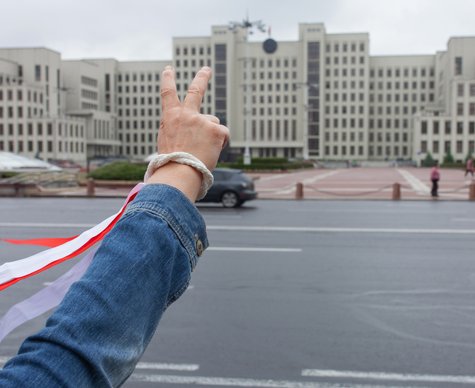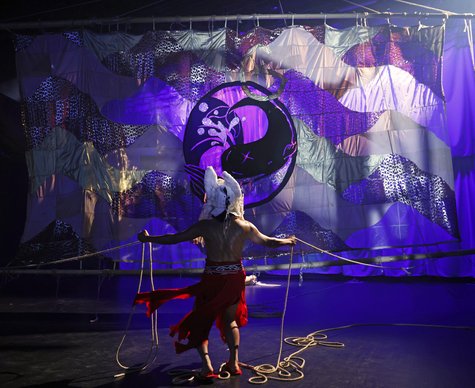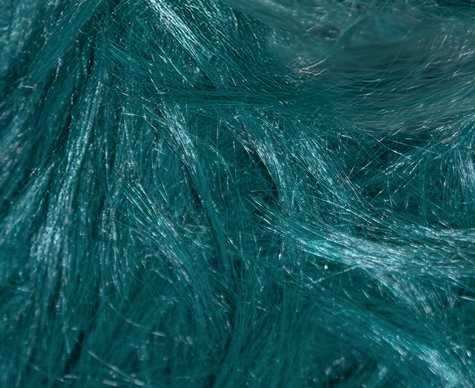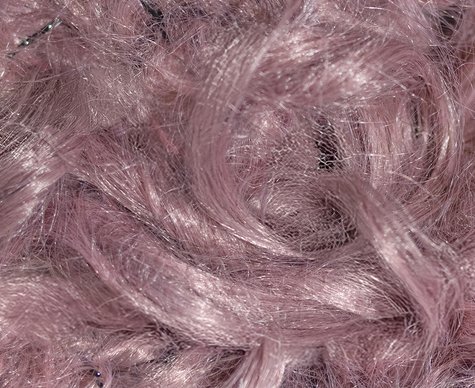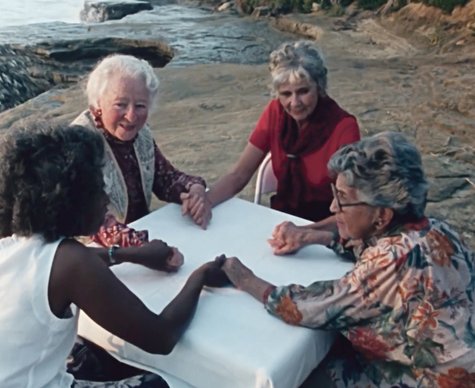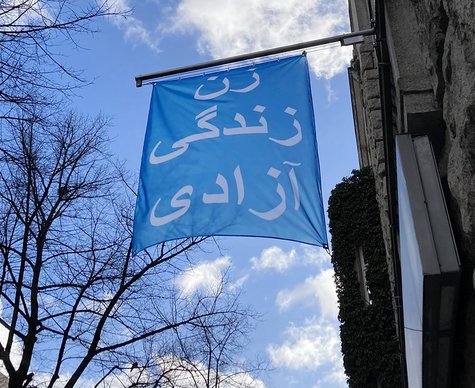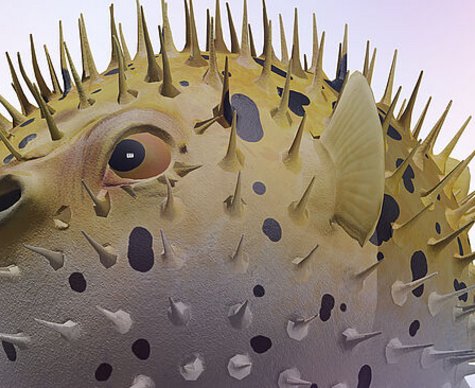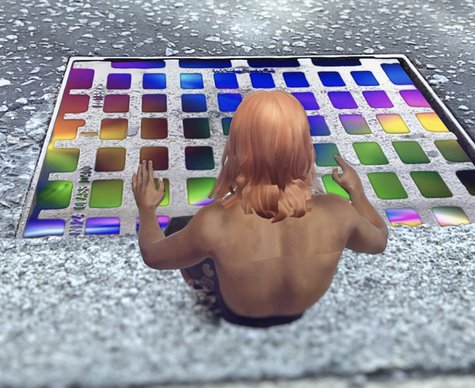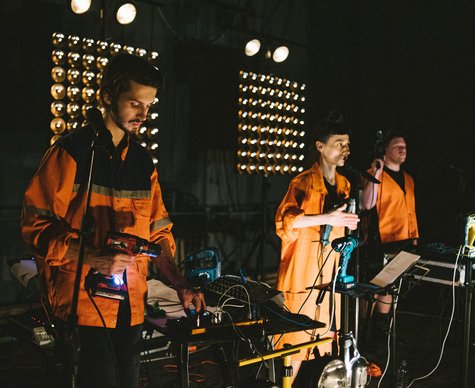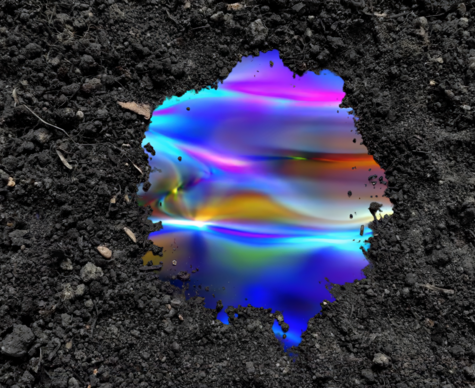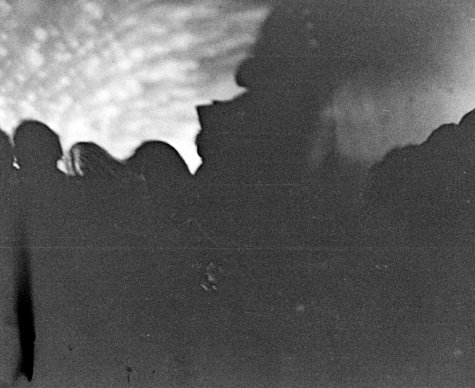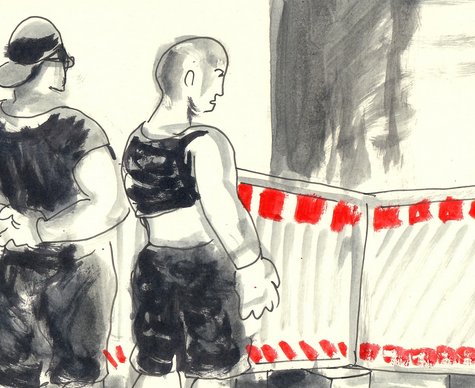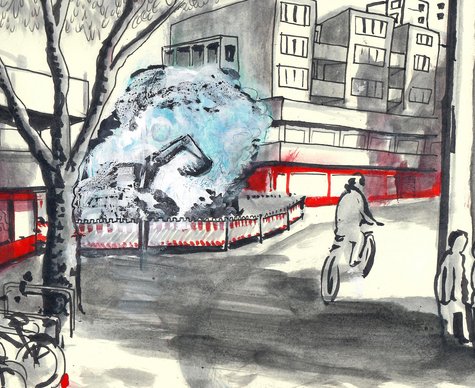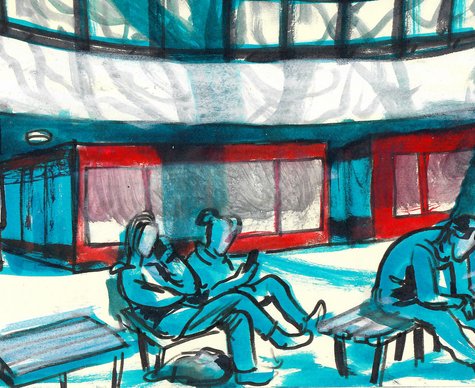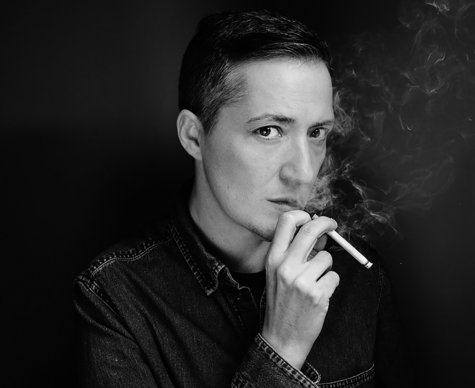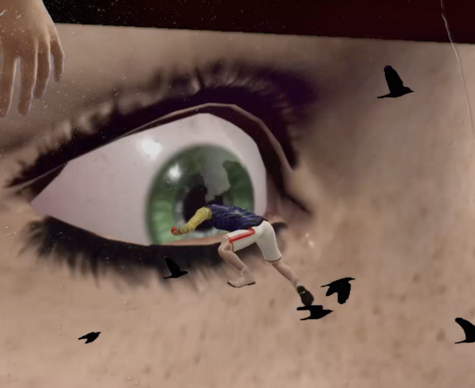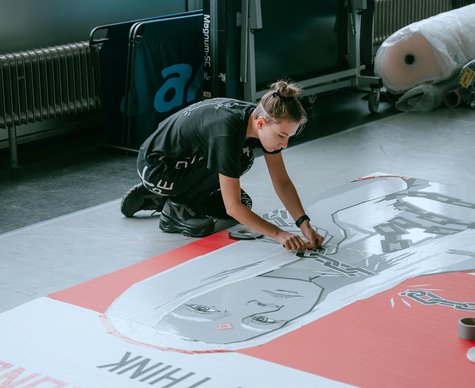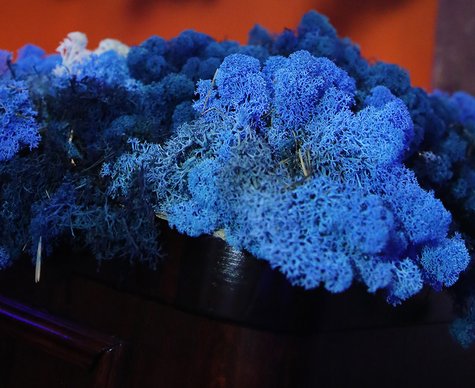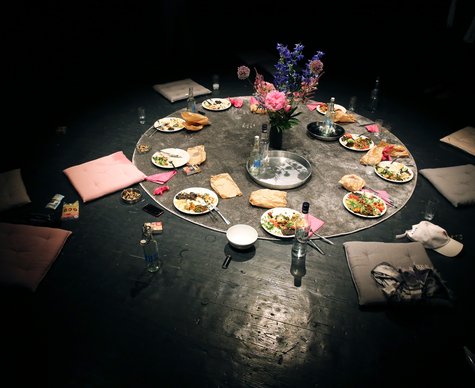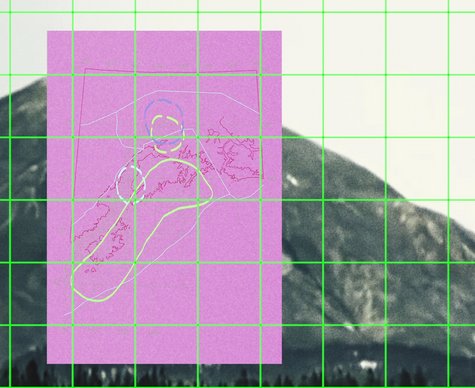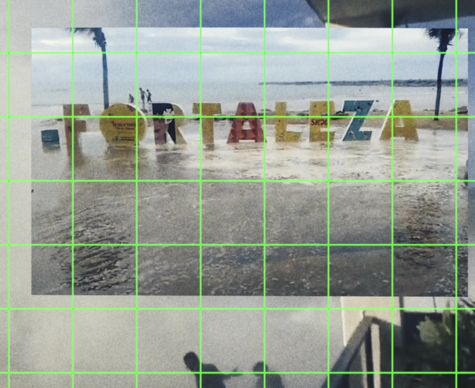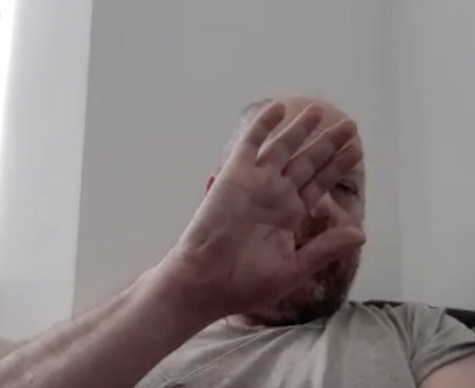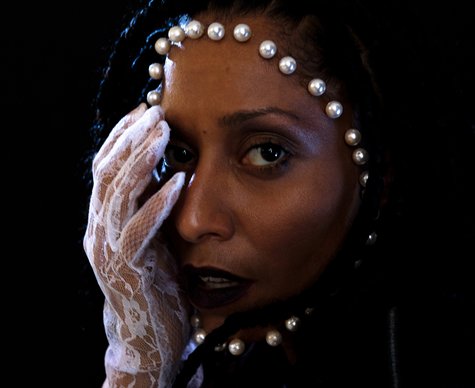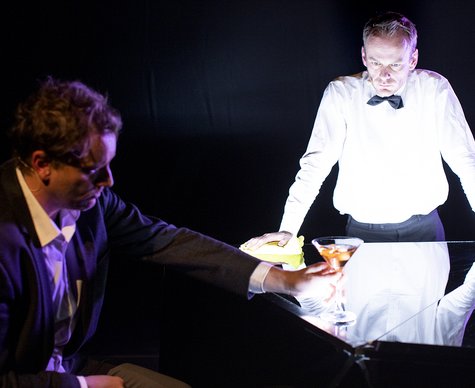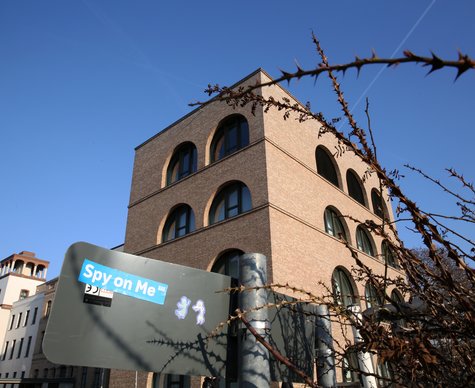Steffi Weismann / Paula Schopf / Jessica Ekomane
Part of “Heroines of Sound Festival“
- Music
- Performance
Steffi Weismann: Generation S (Sound-Performance) / Premiere
Paula Schopf: Espacios en Soledad (Concert) / Premiere
Jessica Ekomane: Untitled (Performance)
Before at 18:00 / HAU2
Panel “Sound Art, Electronic Music and Performance in Slovenia, Czeck Republik, Slovakia and Former Yugoslavia”
With Marie Ctverackova aka Mary C, Nina Dragičević, Lenka Kocisova, Teja Reba
Moderation: Helen Hess / English / Admission free
23:00 / WAU Aftershow with DJ Mary C / Admission free
In the second part of the homage to Mary Ellen Bute, a specially commissioned work by Lucrecia Dalt will receive its premiere. This will be followed by three solo performances: for her composition Generation S, Steffi Weismann uses her own voice, historic film footage (Secrets of Nature, 1930), objects, interviews and field recordings, while Paula Schopf combines turntable, DJ mixers, dubplates and video in her piece Espacios en Soledad (premiere), and Jessica Ekomane presents an electronic quadraphonic work. For the after-show party at WAU, DJ Mary C will play eccentric rap.
Homage to Mary Ellen Bute II
Mary Ellen Bute
Abstronic (colour, 7 min, 1954)
Music: Aaron Copland, Don Gillis
In 1954, Bute began to generate movies directly from the synchronized music using an oscilloscope. For Abstronic, which Bute made to Aaron Copland’s Hoedown from Billy the Kid and Don Gillis’ Ranch House Party, oscilloscope technology was not the central feature, especially as Norman McLaren and Hy Hirsch had previously shown their own cinematic experiments with this technique. Rather, Astronic impressed with the rhythmic pulsation synchronized to the beat of the music, which controlled the movement, with which Bute repeatedly zoomed into the images of the oscilloscope and produced a surrealistic deep perspective.
Mary Ellen Bute
Dada (b/w, 3 min, 1936)
Music: Lucrecia Dalt (premiere)
Commissioned by Heroines of Sound
Dada combines decidedly Dadaist humour with a waltz theme. The contemporary press said: “This witty and delightful film disappears from the screen far too soon.” In 1931, Universal had presented Oskar Fischinger’s short film Studies as a novelty in its newsreel. Bute, who had seen Fischinger’s film, then proposed to Universal a film in a similar style. Since only two or three minutes could be shown in the newsreel anyway, Bute designed a length of three minutes for Dada.
Steffi Weismann
Generation S (UA)
Audio-visual composition for a live voice, objects, interviews, field recordings, video projection and historical film footage (Secrets of Nature, 1930)
Historical footage (Secrets of Nature, 1930) documenting the growth cycle of peas meets sounds and voices that deal with the future scenario of a technological nature. Among them are comments from researchers* on their handling of multidrug-resistant germs and the phantasy of a 10-year-old girl who describes how she would recreate the world. Steffi Weismann brings these elements together in the style of an audio-visual montage by combining performative-musical actions with microphoned and microscopic objects and her live voice.
Paula Schopf
Espacios en Soledad (UA)
Solo performance: electronics, video
The possibility of meaning is identical with the possibility of resonance or even sound itself. (Jean-Luc Nancy)
Jean-Luc Nancy’s prompt to think of meaning asresonance or sound was the starting point for my master’s thesis Klangliche Mythologien presented at UdKBerlin in 2017. Espacios en Soledad isa new version of this work. For the French philosopher, sound and meaning sharea certain space, the space of reference. Inspired by this idea I am interestedin the sound as a reference, but not in the sense of a hint, when, for example,an alarm sounds at the exit of a department store to indicate a theft, but inthe sense that the sound, i.e. the resonance, always refers to itself and thusto our existence as a listener. Listening is the entrance to sonority, meaningand to the self. Every time I return to my hometown of Santiago deChile, I head to the centre of the city, called Santiago Centro. I traverse thestreets of my city, enter these sound spaces, listen to the noise and perceive:an incessant rush of noise. We are surrounded by noise. It’s as if the noisekeeps the world together so we can understand its meaning. In the noise, in theeternal roar of the city, I rediscover fragments of my identity. Espacios en Soledad is a performance withtwo turntables playing two dubplates, a DJ mixer serving as an interfacebetween performer and turntable, and a video projection. The sound materialwritten on two dubplates is set in motion by pitch change, timelinemanipulation, layering, shifting and repetition.
Jessica Ekomane
Untitled
Quadrophonic solo performance: electronics
With elements of psychoacoustics and the gestalt theory, Jessica Ekomane explores in her quadrophonic solo performance how the space that surrounds us influences and changes our perception of rhythms.
DJ Mary C
Eccentric rap, chopped and ornate beats, dangerous electro, juke and dirty downtempo
Dates
Credits
Production. Heroines of Sound Festival. Coproduction: HAU Hebbel am Ufer. Funded by Berlin Senate Department for Culture and Europe, the Federal Government Commissioner for Culture and the Media, Musikfonds e.V., Musicboard GmbH Berlin, Initiative für Neue Musik e.V., Mariann Steegmann Foundation.
![[Translate to EN:]](/fileadmin/Hau/_processed_/3/d/csm_Beauftragte_der_Bundesregierung_fu__r_Kultur_und_Medien_Logo_45d31b5c73.png)
![[Translate to EN:]](/fileadmin/Hau/_processed_/8/0/csm_Senatsverwaltung_fuer_Kultur_und_Europa_Logo_3712040a3e.png)
![[Translate to EN:]](/fileadmin/Hau/_processed_/5/2/csm_musikfonds_web_black_78faee3d15.jpg)
![[Translate to EN:]](/fileadmin/Hau/_processed_/3/d/csm_Musicboard_Logo_6041effe52.jpg)
Location
HAU2
Hallesches Ufer 34, 10963 BerlinThere are two marked parking spots in front of the building. Barrier-free restroom facilities are available. Four relaxed seats are available in the first row of HAU2. Tickets for wheelchair users and accompanying persons can also be booked via the ticketing system. If you need help, please contact our Ticketing & Service team at +49 (0)30 259004-27 or send us an email to
tickets@hebbel-am-ufer.de.
Travelling to HAU2 via U Hallesches Tor:
If you are coming from Hallesches Tor underground station, you will have to use an alternative footpath from Wilhelmstraße / Hallesches Ufer junction, which is separated from the carriageway by a construction fence – the actual footpath is currently closed. Please note: the alternative route is also used by cyclists. Pedestrians should keep to the right. We therefore currently recommend that visually impaired or blind visitors come to the HAU with an accompanying person.
Arrival HAU2 via U Möckernbrücke:
When you leave Möckernbrücke underground station, please stay on the footpath on the canal side until you reach Hallesches Ufer / Großbeerenstraße junction – the opposite side is currently closed due to construction work.





















